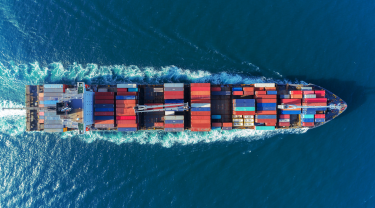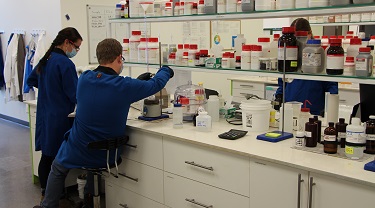High-frequency forecasts are all the rage: Let me know what’s happening today, tomorrow, next week, next month, give me a near-term forecast, and I’m good. Well, real investments aren’t made that way: They’re long horizon, carefully considered, substantial bets. Unlike any other component of gross domestic product (GDP), business investment isn’t about consuming goods today, but about putting in place the stuff that creates tomorrow’s goods. In that sense, it’s a great gauge of where we’re going. So, what are today’s business investment trends telling us?
Let’s rewind for a second. Physical investment hasn’t been a very happy story in recent years. The post-global financial crisis (GFC) years were marked by an initial stall in activity, as pre-crisis investment was at bubble-like intensity. Trouble is, excess capacity wasn’t solved overnight, and business outlays for plant and equipment remained sluggish pretty much through to the onset of COVID-19. If anything, the ramp-up in growth in the two to three years leading up to the pandemic created pent-up demand for investment, and there were faint signs of uptake in 2019.
Lackluster business investment activity is something of a puzzle. After all, technology continues to rise at a blistering exponential pace, and firms everywhere have to run hard just to keep up. These could be forgiven for putting plant expansions on hold, but budgets were also quite tight for machinery and equipment.
Then along came COVID-19, the resulting plunge in GDP and with it, business confidence and also…you guessed it, investment. Unsure of when the lights would come back on, the near-universal push to conserve cash shelved as many investment projects as were shelvable. But investment is nothing if not volatile, and the pandemic was no different. What many businesses instantly realized was that if they were going to keep flows happening, they had to move, and fast. Suddenly, those with digital delivery systems were the go-to places, as we all scrambled to source the goods and services we needed. Loyalty was out the window—those who could deliver got the business. Those who didn’t or couldn’t adapt suffered grave consequences. Fast adapters had to dig deep, and act quickly to get in line ahead of the hordes of others with the same instant needs.
What did this look like in numbers? Well, in synch with the ramp-up in investment was the huge outpouring of public stimulus spending. Removing that from the GDP numbers shows that as a share of economic activity, business investment in machinery and equipment actually went up. That’s saying something, because other big chunks of the economy—notably, consumers—were also in recovery mode at the same time. In the United States, the share rose from an average of 11.4% to 12.1%. For reference, we economists get very excited about movements less than half of this. In the European Union, the number jumped a more modest 0.3 percentage points to 8.1%—still a significant move, given the regional economy’s woes at the time.
One look at the Canadian numbers for the same reference period looks like a big uh-oh. There was actually a substantial drop, from 7.3% to 6.1%. Is this Canadian risk aversion on full display? Not quite; it’s well-known that over the same period, there was a sizable drop in investment in the oil and gas sector—where the share of total investment is far larger than is commonly thought. Take that out, and I’m confident that our numbers are somewhere between the European and U.S. cases.
So, where is this all headed?
- We’re well aware, there doesn’t seem to be sufficient capacity to move the goods and services that people want around the world these days. This will undoubtedly lead to increased investment, spurred on by higher prices.
- The labour shortage is also generally a global problem, with few exceptions, suggesting a higher near-future dependence on robotics, machine learning and higher-tech heavy equipment.
- We’re desperately short of the infrastructure to facilitate commercial flows, as multi-country infrastructure deficit figures suggest.
- Demand for machinery and equipment will be augmented by reshoring and near-shoring of supply chains, and other such initiatives brought on by the pandemic.
- There’s still competitiveness—our need to stay ahead in the global race for market share. This will have an increasing machinery and equipment slant to it.
The bottom line?
In many ways, now is an important global business investment moment. It seems that the pandemic has birthed a post-GFC investment reboot. It’s a great opportunity for those who were already there, but also one for those who are behind to leapfrog to next technologies and put pressure on the rest. Either way, it’s essential to be in the game.
This commentary is presented for informational purposes only. It’s not intended to be a comprehensive or detailed statement on any subject and no representations or warranties, express or implied, are made as to its accuracy, timeliness or completeness. Nothing in this commentary is intended to provide financial, legal, accounting or tax advice nor should it be relied upon. EDC nor the author is liable whatsoever for any loss or damage caused by, or resulting from, any use of or any inaccuracies, errors or omissions in the information provided.






